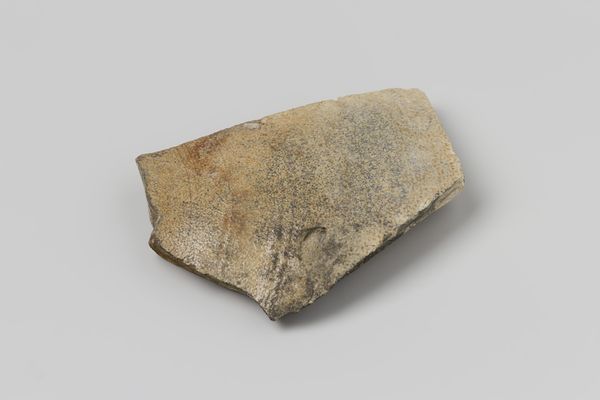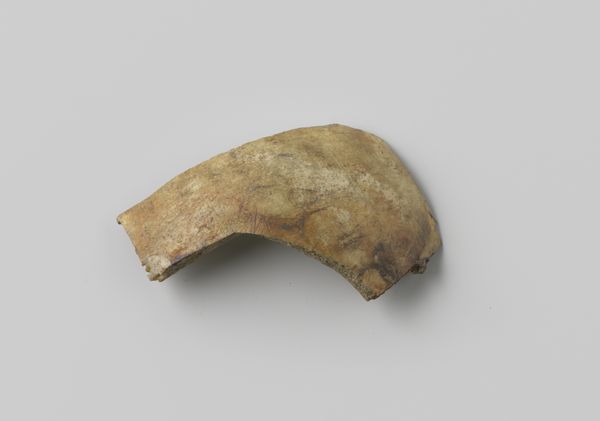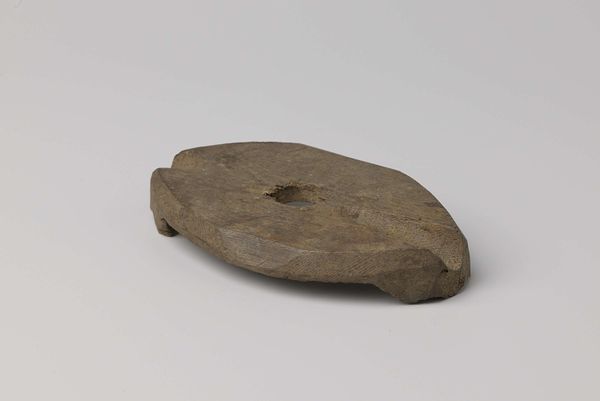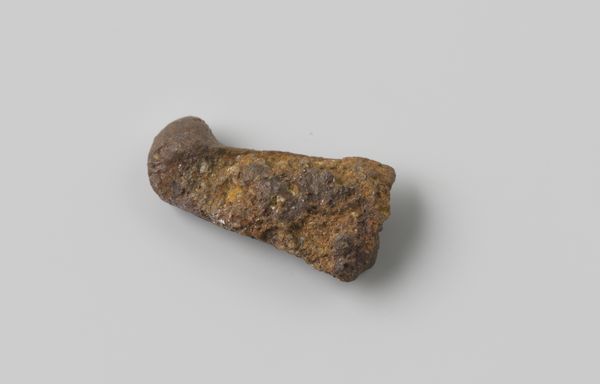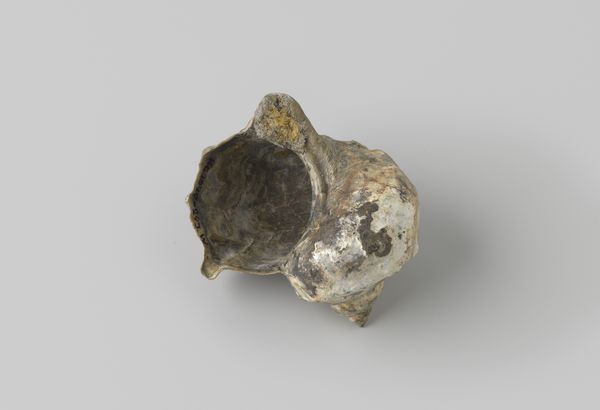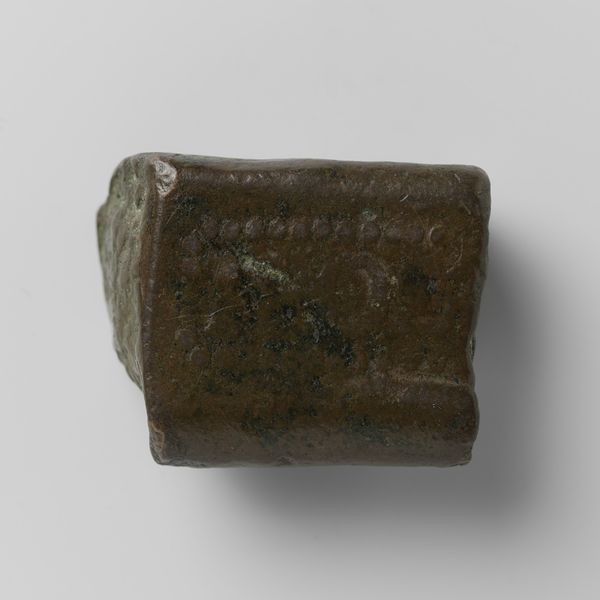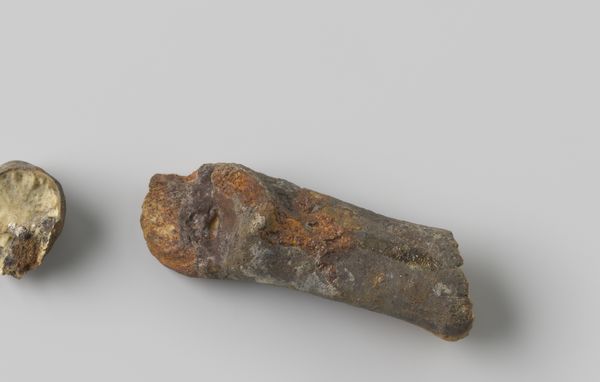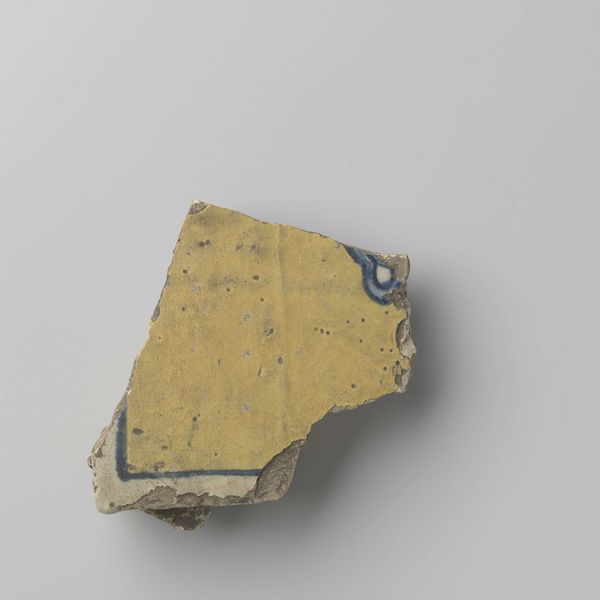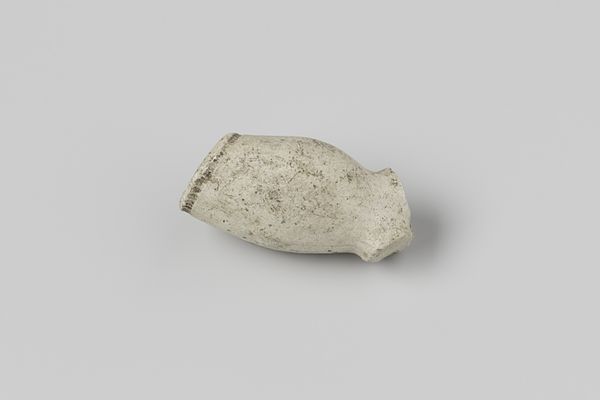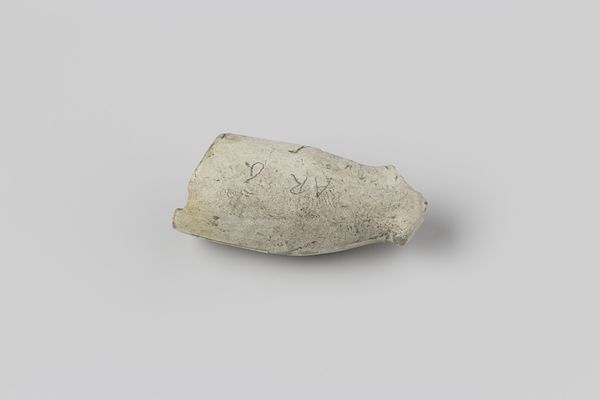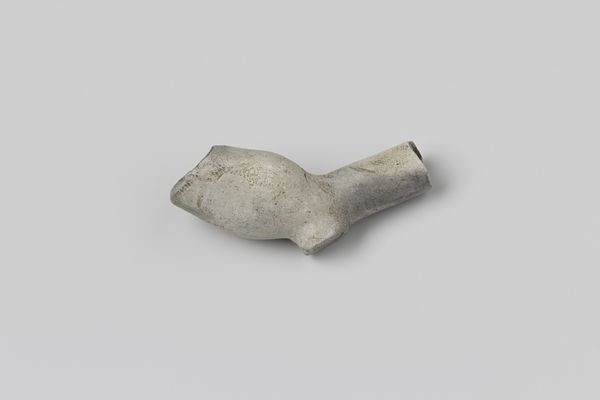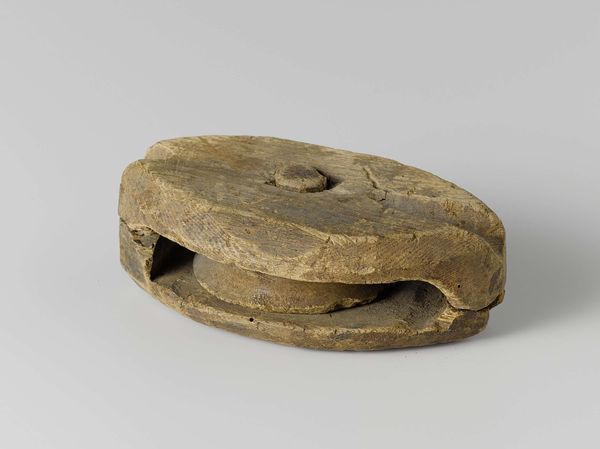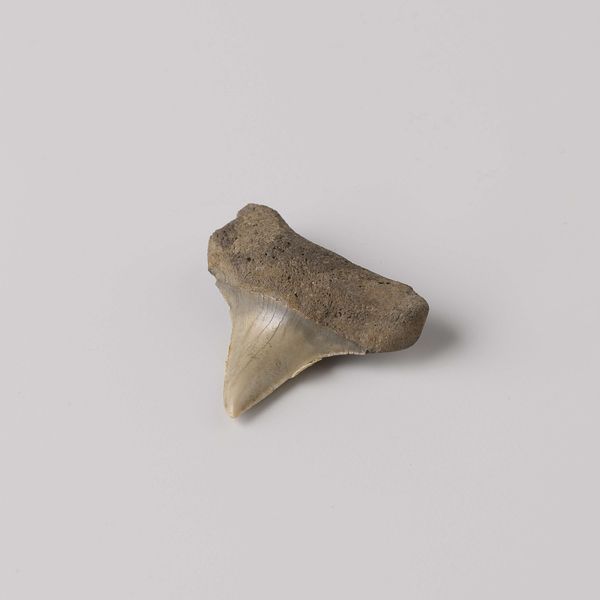
Fragment bot uit het wrak van de Oost-Indiëvaarder Hollandia before 1748
0:00
0:00
nietvantoepassing
Rijksmuseum
found-object
#
found-object
Dimensions: height 0.6 cm, width 2.3 cm, depth 3 cm
Copyright: Rijks Museum: Open Domain
Curator: What a compelling object. We're looking at a fragment, a recovered piece from the wreckage of the Dutch East India ship, the Hollandia, which sank before 1748. It's currently housed here at the Rijksmuseum. Editor: It’s surprisingly small, isn’t it? I imagined something much grander. The weathered surface speaks volumes, all rough edges and mottled textures, a mix of earth tones… quite somber, really. Curator: Its modest scale is precisely what’s so affecting, I think. It's a tangible connection to a major maritime disaster, reflecting Dutch ambitions and vulnerabilities on the high seas during that era. Consider the human cost of such voyages, the societal implications of these losses for global trade networks... Editor: Visually, it's fascinating how the different tones— the dark browns bleeding into lighter ochres—create a kind of faux landscape. It resembles a small, eroded cliff face. I find that ambiguity quite engaging. Is this a thing, or a representation of something else? Curator: The story it tells extends beyond pure aesthetics, though. The Hollandia was carrying a significant cargo of silver when it sank. Recovered objects provide material evidence of this, telling us so much about the economic currents of the 18th century and the role the VOC played in global exchange. Editor: But let's come back to its pure presence. This weathered fragment invites tactile imagination. It’s hard to resist tracing its eroded lines and imagining the forces that shaped its form over centuries. The material itself becomes a record of time, change and loss. Curator: Absolutely. And the museum's choice to display such a fragment elevates a common, found object into something of cultural significance. It reminds us of our relationship with history and with the often violent process of colonialism. Editor: A tiny fragment, yet a doorway to an entire world of textures and tragic stories. Quite potent, when you think about it. Curator: Precisely, and its presence here in the museum asks us to reconsider how we frame and give meaning to objects marked by time and trauma.
Comments
No comments
Be the first to comment and join the conversation on the ultimate creative platform.
